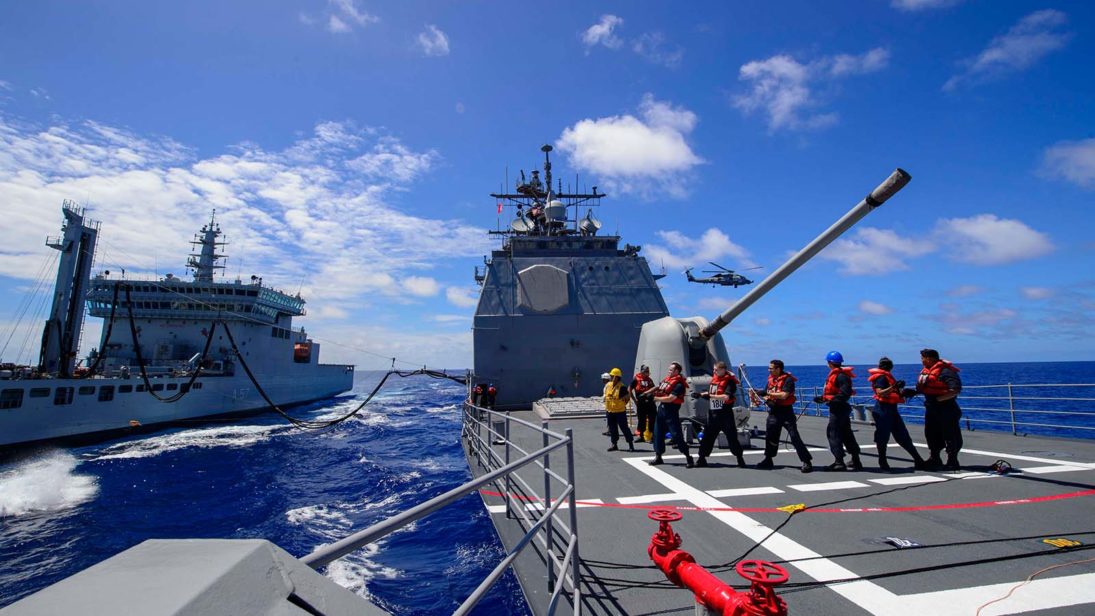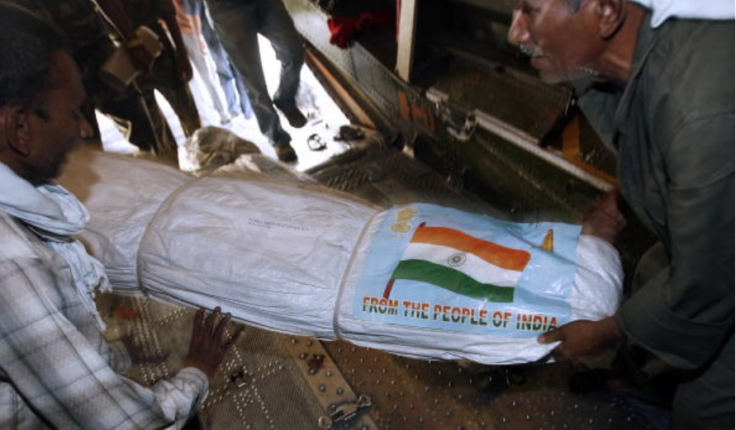
As India-China tensions continue, observers have begun to take a renewed look at what the Quadrilateral Security Dialogue—comprised of India, Japan, Australia, and the United States (the Quad)—can offer as a strategic grouping. Australia’s inclusion in the annual naval exercise Malabar evoked much discussion and fanfare within strategic circles and provided an opportunity to look at what the Quad as a grouping can deliver while building a strategic framework for the Indo-Pacific. Ever since its conceptualization, the multilateral effort has been viewed suspiciously by China, prompting Quad members to emphasize its soft-security dimension, including cooperation through infrastructure development, capacity building, and connectivity.
Although it remains to be seen if one naval exercise can initiate a formal security-oriented cooperation mechanism in the future, there is enough room for India, Australia, and Japan to ensure the multilateral effort remains benign enough to placate China in the short-term. India, with its professed intentions of being a net security provider in the Indian Ocean Region (IOR), can build on its credentials in the neighborhood and drive the grouping’s humanitarian assistance and disaster relief (HADR) efforts.
India’s HADR Efforts in IOR
India’s HADR efforts have gained in prominence, especially in its neighborhood, with its economic rise in the last few decades. Successful relief efforts after the 2004 Indian Ocean tsunami marked a shift in perceptions of India’s capabilities, paving the way for more operations in the coming years. Since then, India’s HADR footprint can be largely traced to the subcontinent and the IOR, with more than two-thirds of its contributions directed to South Asia, as per one estimate. Over the last decade, India has also repeatedly stated its intent to be the region’s “first responder” and a leading actor during emergencies.
India, with its professed intentions of being a net security provider in the Indian Ocean Region (IOR), can build on its credentials in the neighborhood and drive the grouping’s humanitarian assistance and disaster relief (HADR) efforts.
Apart from the 2004 tsunami, some of India’s relief efforts in the IOR include initiatives in the aftermath of cyclones Nargis, Komen, and Mora in 2008, 2015, and 2017 respectively, the 2014 water crisis in the Maldives, and the 2016 floods in Sri Lanka. India’s military assets have been deployed to provide essential relief material, medical supplies, technical expertise, and undertake evacuations and search and rescue. The success of India’s HADR efforts is reflected from the fact that in the wake of Cyclone Nargis in 2008, Myanmar willingly accepted Indian assistance while refusing other international aid.
India has also used regional forums such as the South Asian Association for Regional Cooperation (SAARC), the Indian Ocean Rim Organization (IORA), and the Indian Ocean Naval Symposium (IONS) to establish cooperative mechanisms and standard operating procedures for relief operations. More recently, India helped douse a fire on a large crude carrier off Sri Lanka’s coast as part of a regional mechanism called South Asia Cooperative Environment Program (SACEP). While these are noteworthy measures, regional mechanisms in South Asia have largely had limited success in forming a working disaster relief regime, owing to political tensions between two of its largest members.

HADR as a Cooperative Framework for the Quad
The Quad traces its origins to naval HADR coordination post the 2004 tsunami and the creation of the ad-hoc “Tsunami Core Group,” which brought together the four best suited nations to provide relief in the region. The initiative proved to be a catalyst for rallying other international efforts towards the tsunami affected countries. The event also paved the way for further cooperation within the Quad framework through joint military exercises and diplomatic engagements in the coming years.
The Malabar exercise, initially an India-U.S. bilateral venture, was expanded to include Australia and Japan, along with Singapore, in 2007, marking the first cooperative effort of the Quad. But the grouping faced consistent challenges as China saw it as a security alliance that could one day evolve into an “Asian NATO,” and it was never formalized. However, increasing discomfort between China’s relations with Australia, Japan, and India in recent years has made the grouping viable again.
Apart from working within the Quad framework, India has a history of bilateral HADR cooperation with each of its members. The United States and India have worked on building relief capabilities through joint exercises. With Japan, India finalized a Memorandum of Understanding for exchange of best practices in disaster management and prevention. India and Australia have collaborated through IONS and IORA, with India chairing its Core Group on Disaster Risk Management.
Hence, the foundations to formalize an HADR focused cooperative framework for the Quad already exist. Australia’s return to the Malabar exercise can be the beginning of such a framework. HADR has been a part of Malabar’s agenda over the years, but it is not what the exercise is recognized for. A greater emphasis on developing operating protocols and search and rescue (SAR) operations can help give it an HADR-centric identity. Beyond joint exercises, a revival of a Quad-driven tsunami or other emergency focused association can be utilized for greater capacity building and data sharing. This can particularly include small littoral states in the IOR with a history of coping with tsunami related emergencies—the Maldives, Mauritius, and Sri Lanka. The Bay of Bengal region is also a particularly cyclone-prone region, which presents collaborative opportunities on SAR focused joint exercises and development of early warning systems.
However, there are opportunities to use the pandemic for working together on multiple fronts. The Quad should take this opportunity to think ahead and build capabilities to address non-conventional forms of emergencies such as cyberattacks, piracy threats, and industrial failures.
The COVID-19 pandemic, however, has emerged as a potential deterrent for the formalization of the Quad. Worsening U.S.-China relations post pandemic have meant that members of the Quad will be increasingly wary of appearing closer to the United States and antagonizing China. However, there are opportunities to use the pandemic for working together on multiple fronts. The Quad should take this opportunity to think ahead and build capabilities to address non-conventional forms of emergencies such as cyberattacks, piracy threats, and industrial failures.
Thus, an HADR-centric agenda for the Quad can be a win-win on multiple fronts. It will not only help with setting up effective relief mechanisms in the region in times of emergencies, but also consolidate India’s footprint in the neighborhood. For Australia, Japan, and India, concentrating on a benign program for cooperation with disaster management as its fulcrum can be a successful balancing act between the United States and China. Finally, engaging with smaller states in the region will provide them with alternatives to hedge China’s supposedly strategic economic maneuvers.
***
Image 1: U.S. Indo-Pacific Command via Flickr
Image 2: Manpreet Romana/AFP via Getty Images


